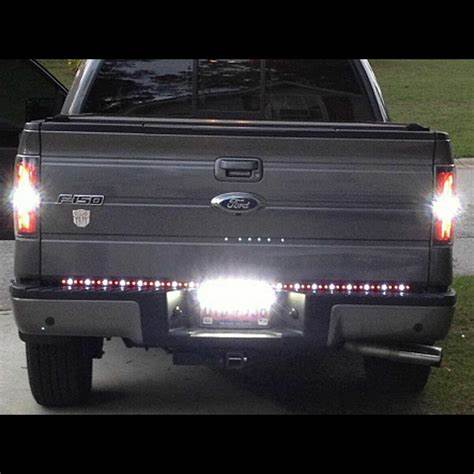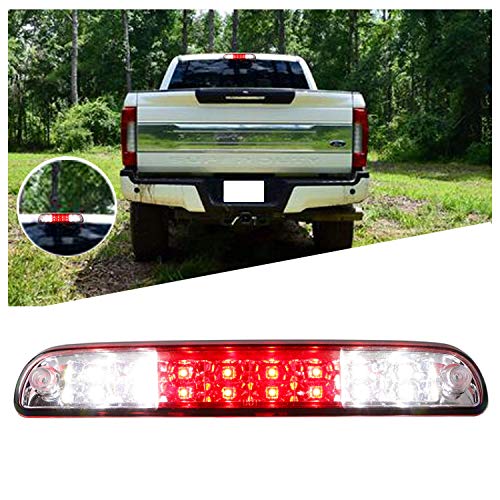Understanding the Ford F150 Tail Light Wire Colors
When we are driving around we can see the taillights of those in front of us but we have no idea what is going on with our own rear lighting. Often it’s not until we see the lights on the top of the cop car following us that we realize there’s an issue.

Taillights are very important and failure to have them in working order can lead us to a costly fine and at risk of terrible accidents. This is why it is important to understand what we are looking at when it comes to taillight wiring.
In this post we will be focusing on the wire colors and their functions that you will find in your Ford F250 truck. So read on to find out what’s going on back there and perhaps learn a few things that can help you avoid a traffic ticket from broken tail lights.
What are the Functions of the Taillight Wires in a Ford F250?
Assuming you are not one of those people who unfortunately struggle with color blindness, understanding the color code of taillight wiring shouldn’t be a huge issue. Sadly owners' manuals are not always helpful in this field so allow me to make things perfectly clear.
In the below table you will find the function, pin type and color of the tail light wires for a Ford F250 .
This should give you some idea with regards what the wire colors mean but we won't leave you with just that. Continue reading as we go more in depth into the functions of these wires. You might be wondering for instance what does the pin type mean?
The answer is that in an effort to make dealing with taillights easier the wires are all connected through a single seven pin plug. Each of the pins in the plug pertain to a specific wire with the exception of the third pin. This pin leads to nothing.
Ground (Negative) Wire
All electrical things require a ground wire to essentially direct current away safely and this is no exception when it comes to cars. There are multiple ground wires throughout a vehicle and you will find one of these in the taillight wiring system.
In the Ford F250 this ground wire is found at the back of the taillight and will generally be black. They may sometimes have a yellow, green or orange stripe as well. This ground wire will lead to the same grounding point as the truck and any trailer it may be pulling.
License & Park Light
On the Ford F250 there is a specific light that illuminates the license plate when driving. This is of course found in the truck's taillight wiring harness. It will generally be brown in color. When it is a darker brown it can sometimes be confused for the ground wire.
Reverse Light
I don’t know if this has happened to you but sometimes idiots get mixed up and reverse instead of driving forward. The first indication you will get is seeing their reverse lights come on and if you are sitting at a light in traffic it can be heart stopping. It could be so much worse if those reverse lights didn’t work and they just suddenly backed up right into the front of your car.

The reverse wire is hooked up to the truck's back up circuit and will illuminate the reverse lights of the truck and potentially the trailer you are towing. This is wire that can be either pink or black or a combination of the two.
It should be noted that 4-way, 5-way and 6-way trailers do not have this wire and the reverse light has to be activated from under the dash within your F250.
Left & Right Turn Signals
These are two very important wires because turn signals are themselves very important. If a car coming up behind does not realize you are about to turn and tries to pass you on the side you are turning things can get pretty messy.
The colors of these wires can differ in Ford F250 trucks
- Left turn wire: This wire is generally a light green or orange color and will be directly connected to the left rear light with a splice. This splice allows the wire to also feed current to .1 fuse illuminating the blinker when needed
- Right turn wire: This wire is generally orange or light blue and will be attached in a similar way as the left only this time to the right rear light
Center High Mount Stop Light
As you will have seen in the table this particular taillight is not always involved in the system. This is a brake light that is located at the top of the back of the truck's cab. It’s a backup brake light in case you can not see the lower brake lights.

When in use this is attached to a wire which is mostly green in color. It is also referred to as an extra hotwire and can be accessed under the driver's side step plate.
Why Are Tail Lights Important?
Driving down a dark country road with no street lighting affords you visibility as far as your headlights can reach. If someone else is on this road and their taillights are not functioning you could easily cruise right up on them and be within crashing distance before you even realize they are there.
These rear lights not only make you more visible at night but they also signal your intentions regarding driving. If you are braking it tells the driver behind so they can react accordingly. If you decide to turn then these lights will also relay that to the driver behind you.
If your taillights were to fail and not be illuminated you would be at serious risk for an accident. This is of course not to even mention the fact that police can and will pull you over for non functioning taillights.
Can You Fix Your Own Tail Lights?
When it comes to fixing your taillights it depends on the problem and your skill level as to whether or not you can repair them yourself. Replacing a bulb, light lens or a fuse are all relatively easy with the right tools and know-how.
Wiring is a little more complex than changing a bulb so if you have an issue with the wires and you can identify what that is you should make the judgement call as to whether you attempt the repair. This is not something to take lightly as a mistake can leave you without rear lights and this can be very dangerous.
If you are confident to tackle this on your own you might find guidance in the form of YouTube videos. However if you have any doubts this may be best left to a professional.
Conclusion
It is not too hard to identify and locate the wires connected to your taillights. They follow a specific wiring color system and thankfully it is not a complicated lay out. If you know the right colors you can likely identify from the issue which wire may be causing the issue.
Link To or Reference This Page
We spend a lot of time collecting, cleaning, merging, and formatting the data that is shown on the site to be as useful to you as possible.
If you found the data or information on this page useful in your research, please use the tool below to properly cite or reference Tow Ratings as the source. We appreciate your support!
-
<a href="http://towratings.net/blog/understanding-the-ford-f150-tail-light-wire-colors/">Understanding the Ford F150 Tail Light Wire Colors</a>
-
"Understanding the Ford F150 Tail Light Wire Colors". Tow Ratings. Accessed on April 25, 2024. http://towratings.net/blog/understanding-the-ford-f150-tail-light-wire-colors/.
-
"Understanding the Ford F150 Tail Light Wire Colors". Tow Ratings, http://towratings.net/blog/understanding-the-ford-f150-tail-light-wire-colors/. Accessed 25 April, 2024
-
Understanding the Ford F150 Tail Light Wire Colors. Tow Ratings. Retrieved from http://towratings.net/blog/understanding-the-ford-f150-tail-light-wire-colors/.